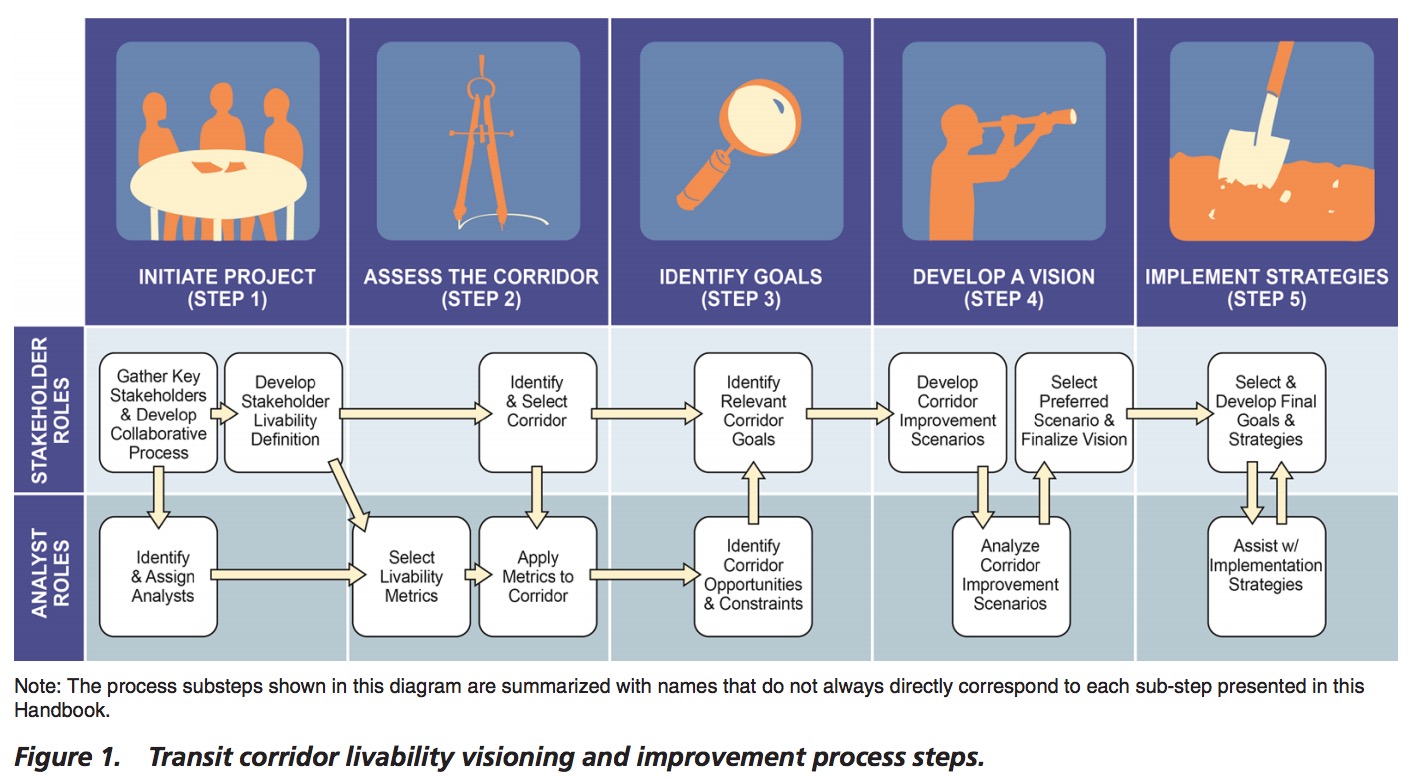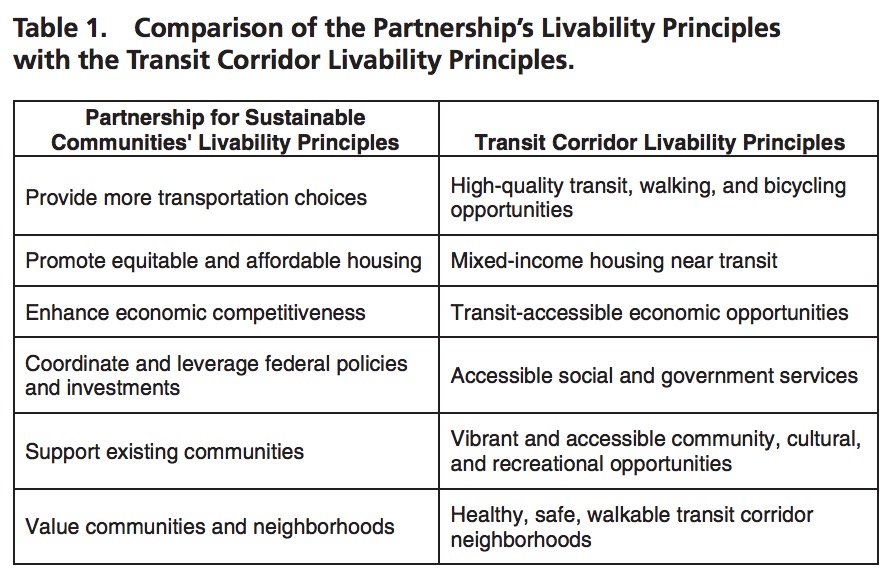TRANSPORTATION RESEARCH BOARD
By Dianne S. Schwager, Staff Officer, Transportation Research Board
Handbook Introduction
While livability has received increasing attention in planning and policy circles recently, agreement as to how to define, measure, and create it has been elusive. This is especially true in terms of the livability benefits of transit investments. While livability definitions tend to boil livability down to serving diverse people with diverse opportunities (RITA Office of Research, Development, and Technology 2011), most have not been specific enough to measure it consistently and implement it effectively. Furthermore, getting specific about livability—particularly when focusing on the livability benefits of transit-supportive investments—may cause those who do not care for transit to dismiss it.
This Handbook offers a bridge between these objectives: it provides a definition broad enough for all but specific enough to be useful. It provides a measurable and actionable definition of transit corridor livability that is based on core, widely accepted values that can make it universally acceptable. Using this definition, the Handbook offers a set of methods, metrics, and strategies embedded within a five-step visioning and improvement process that communities can use to improve livability in their transit corridors. This process, and the methods, metrics and strategies it employs, provides transit corridor stakeholders with a set of tools and techniques that can help in planning and building support for corridor improvements, screening alternatives in preparation for environmental review, identifying a corridor’s livability needs, and developing an action-oriented set of strategies for improving transit corridor livability and quality of life.
What This Handbook Is (and Is Not) Designed to Do
This Handbook is designed to provide the following:
- A clear and precise understanding of transit corridor livability that is also flexible enough to account for local values and aspirations—it is not one-size-fits-all.
- A practical, powerful, and empirically based set of analytic tools for measurement, which are designed to supplement but not replace established travel demand, transit quality of service, or traffic operations tools.
- A clear, step-by-step visioning process for building corridor coalitions, not for top-down planning.
- A comprehensive menu of implementation goals and strategies that provides options without being prescriptive.
Why Plan for Livability?
There are a number of important benefits to planning transit systems and their surrounding communities for enhanced livability. Livability planning techniques and implementation strategies can help:
- Increase transit ridership, walking, and bicycle use;
- Increase the number of people who can perform many of their daily activities within their communities;
- Provide more affordable housing opportunities;
- Provide more opportunities for a community’s residents, workers, and visitors to make healthy lifestyle choices through active transportation modes such as walking and cycling; and
- Increase public participation and equity in the planning process.
Why Plan Transit Corridors?
There are several important benefits to planning transit systems and their surrounding communities at the corridor level. Transit corridor-level planning helps to:
- Increase transit ridership by creating consistent and connected corridor station areas;
- Provide more economic development opportunities beyond immediate station areas;
- Increase the distance people will be willing to walk or bike by integrating transit services on a corridor-wide basis;
- Provide desirable land uses and amenities linking neighborhoods to transit;
- Provide transit-accessible activities and opportunities that serve the full spectrum of residents’ needs;
- Bring urban design, infrastructure, and streetscape improvements to areas not typically covered by plans focused on the quarter- to half-mile radius of transit stations, which helps create consistent and connected corridor station areas (Urban Land Institute-Los Angeles 2013);
- Provide more economic development opportunities beyond immediate station areas, which leverages private investment with public investment collateral to transit and economic development (Urban Land Institute-Los Angeles 2013); and
- Decrease the “first-mile/last-mile” problem of transit station access, which increases the distance people will be willing to walk or bike and integrates transit services on a corridor-wide basis (Urban Land Institute-Los Angeles 2013).
Defining Transit Corridor Livability
The Handbook defines livability as people having good access to opportunities they can use in the pursuit of improvements to their quality of life.
This is a definition of livability for all.
The Handbook’s definition combines this “access to opportunities” statement with refined and transit-specific versions of the Livability Principles developed by the Partnership for Sustainable Communities—a collaboration between the U.S. Department of Transportation, the Environmental Protection Agency, and the Department of Housing and Urban Development (U.S. Department of Housing and Urban Development et al. undated). The new Transit Corridor Livability Principles are summarized and presented along with the original principles that inspired them in Table 1.
Download full version (registration required): Livable Transit Corridors
About the Transportation Research Board
www.trb.org
The mission of the Transportation Research Board (TRB) is to promote innovation and progress in transportation through research. In an objective and interdisciplinary setting, TRB facilitates the sharing of information on transportation practice and policy by researchers and practitioners; stimulates research and offers research management services that promote technical excellence; provides expert advice on transportation policy and programs; and disseminates research results broadly and encouraged their implementation.
Tags: Dianne S. Schwager, National Academies, Transportation Research Board, TRB of NA








 RSS Feed
RSS Feed